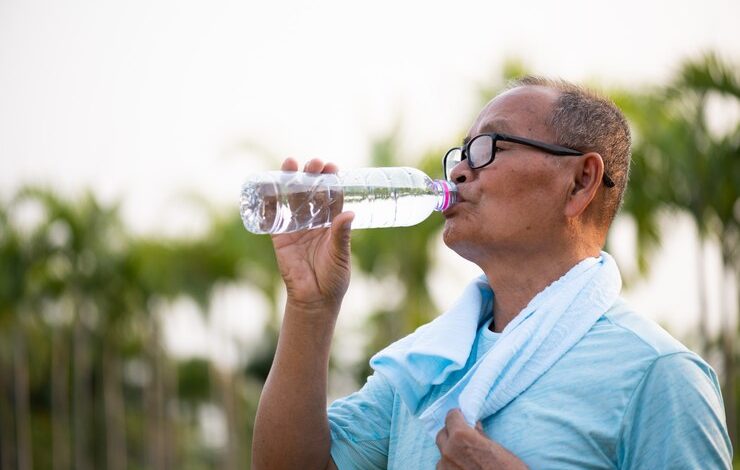How Much Water Should I Drink When Taking Spironolactone?

Diuretics, also called water pills, are medications designed to increase the amount of water and salt expelled from the body as urine. There are three types of prescription diuretics. They’re often prescribed to help treat high blood pressure, but they’re used for other conditions as well.
Diuretics in general trigger your kidneys to release sodium in your urine, which then takes water from your blood, helping you urinate out excess water. With less fluid in your veins, your blood pressure decreases but this can also contribute to dehydration. Excessive thirst can sometimes be a side effect of these types of medication.
What is Spironolactone?
Spironolactone is a medication used to treat certain patients with hyperaldosteronism (the body produces too much aldosterone, a naturally occurring hormone); low potassium levels; heart failure; and in patients with edema (fluid retention) caused by various conditions, including liver, or kidney disease. It is also used alone or with other medications to treat high blood pressure.
Spironolactone was discovered in 1957 and was introduced in 1959. It is on the World Health Organization’s List of Essential Medicines. It is available as a generic medication.
How spironolactone works
This drug belongs to a class of drugs called aldosterone antagonists (blockers), or potassium-sparing diuretics. A class of drugs is a group of medications that work in a similar way. These drugs are often used to treat similar conditions.
This drug works by blocking aldosterone activity. Aldosterone is a chemical made by the body that can cause water retention. This makes certain heart, kidney, and liver conditions worse. By blocking aldosterone, your body won’t retain fluid. This process also stops potassium from being excreted by your body. This drug may lower your blood pressure by blocking aldosterone’s effect on your blood vessels.
How spironolactone is used
Spironolactone comes as a tablet and suspension (liquid; Carospir) to take by mouth. It usually is taken once or twice a day. Take spironolactone suspension consistently either with food or without food each time. Take spironolactone at around the same time(s) every day. Follow the directions on your prescription label carefully, and ask your doctor or pharmacist to explain any part you do not understand. Take spironolactone exactly as directed. Do not take more or less of it or take it more often than prescribed by your doctor.
Shake the oral suspension well before each use to mix the medication evenly.
Your doctor may start you on a low dose of spironolactone and gradually increase your dose.
Spironolactone tablets and suspension release the medication differently in your body and cannot be substituted for one another. Only take the spironolactone product prescribed by your doctor and do not switch to a different spironolactone product unless your doctor says that you should.
Spironolactone controls high blood pressure, edema, heart failure, and hyperaldosteronism but does not cure these conditions. It may take about 2 weeks or longer before the full effect of spironolactone occurs. Continue to take spironolactone even if you feel well. Do not stop taking spironolactone without talking to your doctor.
How much water should I drink when taking spironolactone?
Taking a diuretic like spironolactone can lead to dehydration. People taking spironolactone should take an adequate amount of water. Drinking approximately 2.5 to 3.5 pints or 1.5 to 2 liters of fluid per day should be ok.
If you experience an excessive thirst for water or have side effects that bother you while taking spironolactone, talk to your doctor. They may prescribe a different medication or combination of medications to help reduce your side effects.
Whether or not you have side effects, don’t stop taking your diuretic without first talking to your doctor.





